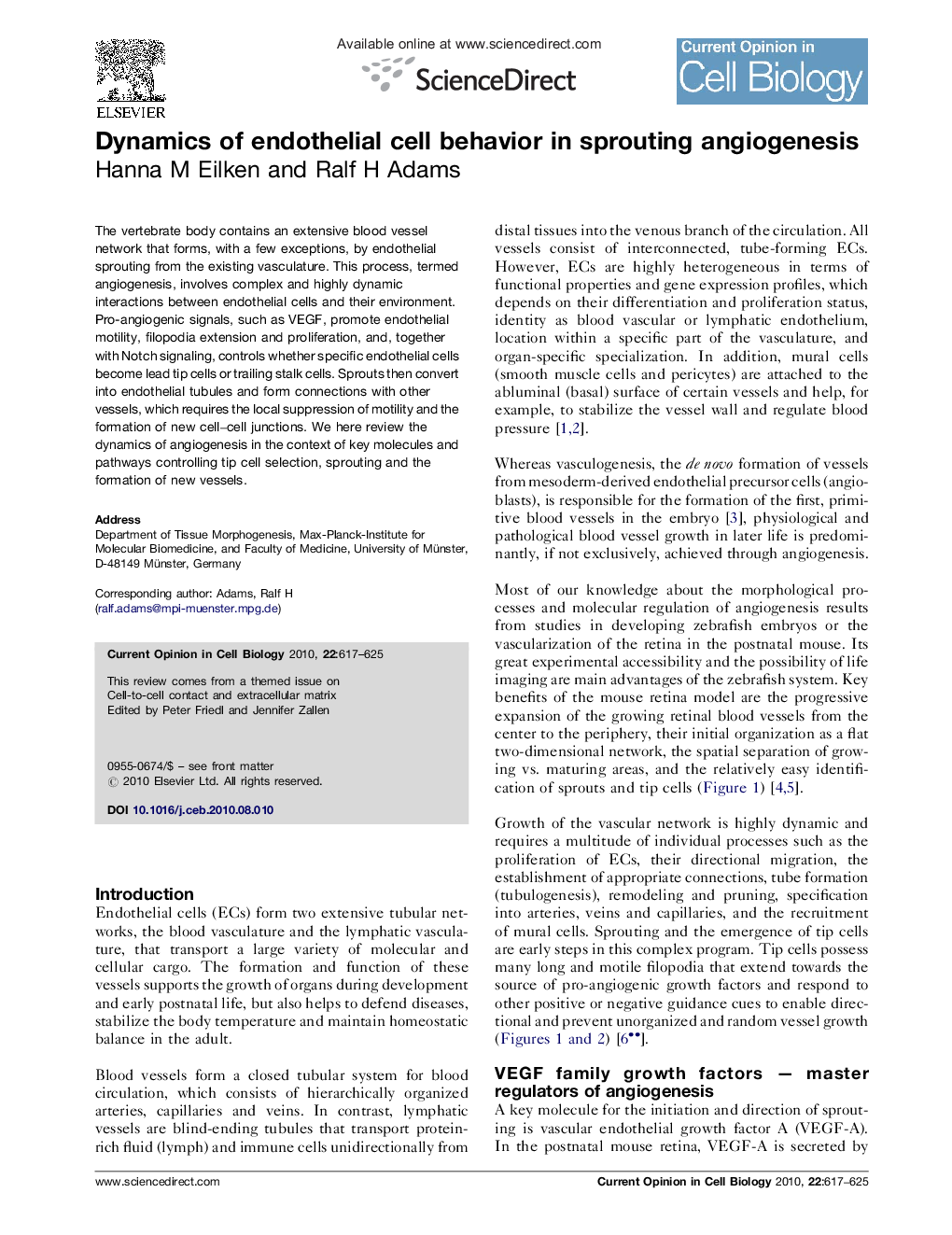| Article ID | Journal | Published Year | Pages | File Type |
|---|---|---|---|---|
| 2169960 | Current Opinion in Cell Biology | 2010 | 9 Pages |
The vertebrate body contains an extensive blood vessel network that forms, with a few exceptions, by endothelial sprouting from the existing vasculature. This process, termed angiogenesis, involves complex and highly dynamic interactions between endothelial cells and their environment. Pro-angiogenic signals, such as VEGF, promote endothelial motility, filopodia extension and proliferation, and, together with Notch signaling, controls whether specific endothelial cells become lead tip cells or trailing stalk cells. Sprouts then convert into endothelial tubules and form connections with other vessels, which requires the local suppression of motility and the formation of new cell–cell junctions. We here review the dynamics of angiogenesis in the context of key molecules and pathways controlling tip cell selection, sprouting and the formation of new vessels.
